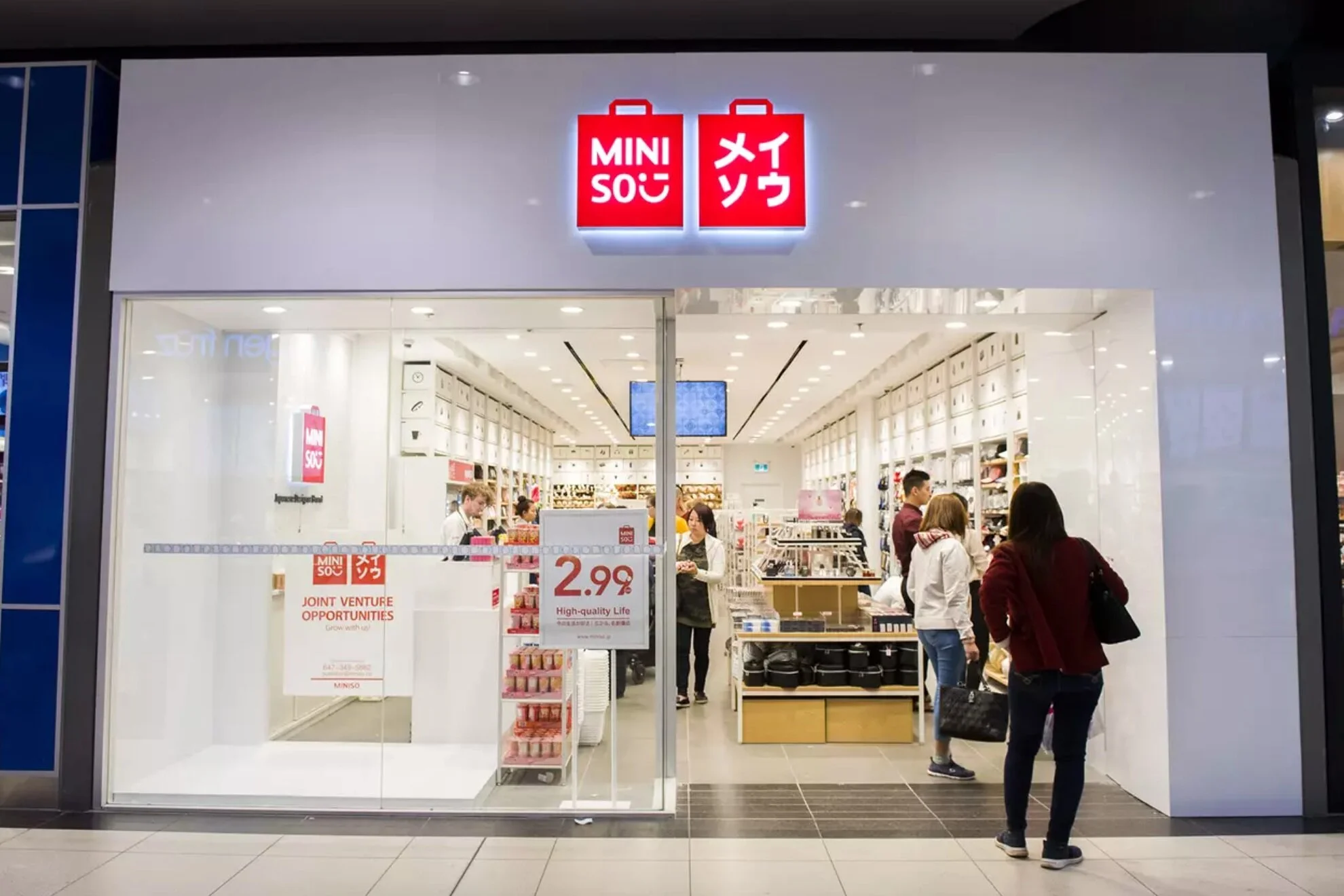Hudson’s Bay Opens First New Store in Canada in 15 Years [Photos/Analysis]
/Photo: Carrefour Angrignon Facebook Profile
By Craig Patterson
Toronto-based department store chain Hudson’s Bay has opened its first newly-built store in almost 15 years in a suburban Montreal shopping centre. The opening represents something that we’ll be seeing a lot less of in Canada moving forward — a traditional department store opening a new location, at a time when mall landlords are looking to other concepts to anchor and draw-in consumers.
The 129,000 square foot Hudson’s Bay store is located at the Carrefour Angrignon Shopping Centre in LaSalle, located about six kilometres south of Montreal’s downtown core. The new store features the typical departments found at Hudson’s Bay including fashions for women, men and children as well as footwear, leather goods and accessories, major home fashions and Hudson’s Bay’s new toy department. The store also features an expanded assortment of beauty and cosmetics. Its design reflects Hudson's Bay's updated interior aesthetic which features bright lighting and attractive interiors -- some existing stores have seen such renovations, though many suburban stores leave something to be desired.
“We’re excited to extend the Hudson’s Bay footprint in Quebec with our opening in LaSalle,” said Alison Coville, President of Hudson’s Bay. “Hudson’s Bay prides itself on providing new and exciting experiences for our customers and we look forward to joining the LaSalle community.”
The last time Hudson's Bay opened a new full-line store was in the year 2003 when it unveiled its 212,000 square foot location at CF Polo Park in Winnipeg. That store replaced a former Eaton's location in the mall.
Photo: Carrefour Angrignon Facebook Profile
Photo: HBC
The store’s grand opening over the weekend featured Vanessa Grimaldi of ABC’s “The Bachelor,” who hosted the store’s official ribbon-cutting ceremony. There were also appearances throughout the weekend by Canadian Olympic Athletes Max Parrot, Philippe Gagné and Joseph Polossifakis, as well as Celebrity Chef Chuck Hughes.
The new Carrefour Angrignon Hudson’s Bay replaces a Target store which operated in the mall for a couple of years — Target exited the Canadian market in early 2015 after a disastrous expansion which saw it lose billions of dollars in the process.
Carrefour Angrignon spans about 850,000 square feet, making it one of the largest fashion shopping malls in the Greater Montreal area -- it services the trade areas of LaSalle, Nuns' Island, Montréal, Lachine, Montréal West, N.D.G., Côte Saint-Luc, Dorval and Châteauguay (representing a population of about 612,000 people). Annual sales are in excess of $430/square foot according to landlord Westcliff's leasing site, with the centre seeing about 6.5-million visitors.
Photo: HBC
Photo: Carrefour Angrignon Facebook Profile
Hudson’s Bay operates 12 stores in the Montreal area, including a 650,000 square foot multi-level flagship in the city’s downtown core, as well as smaller units in suburban malls. That store count will be reduced to 11 this fall with the closure of its location at the Le Boulevard shopping centre — we recently profiled potential redevelopment opportunities for that mall space, with options including smaller anchors as well as larger-format food-and-beverage offerings.
The next newly-built Hudson’s Bay store to open in Canada will actually be a replacement location in the same mall. Vancouver’s Oakridge Centre will see a newly built 140,000 square foot Hudson’s Bay store open as part of a mall redevelopment in 2022, replacing an existing store which was originally branded as Woodward’s.
We’re unaware of any plans for future Hudson’s Bay stores anywhere else in Canada at this time — department stores are something of a remnant from the past in North America, and some landlords are even saying that they’re not interested in including such traditional large anchors in their malls. There are numerous examples of this and one notable example in Montreal is the massive Royalmount project which will open in several years time. Instead of department stores, the centre’s anchors will include an expansive mix of food and beverage offerings as well as entertainment and other attractions that are expected to draw shoppers from the region.
Our NEW Store at Carrefour Angrignon in Montreal is now open! We had so much fun this weekend celebrating the grand opening with @VanessaGrimaldi and @ChefChuckHughes. Visit us now at 7091 boul. Newman. pic.twitter.com/GuetRK6ZhH
— Hudson's Bay (@hudsonsbay) August 27, 2018
Photo: Carrefour Angrignon Facebook Profile
Smaller specialty anchor stores are still expanding their operations in Canada, however. TJX Companies’ brands Winners, HomeSense and Marshalls are all expanding their base of stores in Canada, in some cases taking part of the retail space once occupied by larger retailers such as Sears Canada and Target. ‘Cultural department store’ chain Indigo is also utilizing the opportunity to replace many of its older-format Indigo and Chapters stores by building new concept Indigo-branded locations in part of the real estate once occupied by department store retailers.
Other anchors such as ‘food halls’ and similar market places are currently in vogue with mall landlords. Next month, for example, Market & Co. will debut at the Upper Canada Mall in Newmarket, north of Toronto, and others are planned as Oxford Properties and other landlords re-think their mall real estate while seeking to drive traffic to their centres with food and beverage offerings which also includes an expanded assortment of full-sized restaurants.
At one time, much of Canada’s retail sales were done in major department stores. Toronto-based Eaton’s was an important national retailer, as was Simpson’s and Sears (which at one time operated under the same ownership). Regional nameplates such as Woodward’s in Western Canada, Morgan’s in Quebec and others were household names until they either went under or were acquired. Hudson’s Bay ended up buying struggling Woodward’s and Simpson’s and rebranded many of those stores to its Hudson’s Bay nameplate (if locations were kept open at all).
Photo: HBC
Photo: Carrefour Angrignon Facebook Profile
Until late last year, Sears Canada was Canada’s other traditional department store chain. After declaring bankruptcy last year, its last Canadian stores closed in early 2018.
The end of the era of department stores isn’t unique to Canada. The United States was once home to a mighty roster of regional department stores with names such as Marshall Field’s, Dayton’s, The Bon Marché, Burdine’s, Wanamaker, Bullock’s and many others — most of which were eventually converted to Macy’s stores, resulting in considerably fewer locations due to duplicity.
While the Carrefour Angrignon is the first newly-built Hudson’s Bay store in recent memory, parent company The Hudson’s Bay Company (HBC) has been rolling out stores under its Saks Fifth Avenue and Saks OFF 5TH banners. In February of 2016, HBC opened two Saks Fifth Avenue stores in Toronto (A 170,000 square foot flagship at CF Toronto Eaton Centre, connected to the Hudson’s Bay Queen Street store as well as a 143,000 square foot unit at CF Sherway Gardens) and in February of 2018, a 115,000 square foot location at CF Chinook Centre in Calgary. HBC’s off-price division Saks OFF 5TH has also been opening stores across the country with plans to operate 25 locations before the end of the decade.
Photo: HBC
Photo: Carrefour Angrignon
HBC had originally announced that it was opening a 200,000 square foot Saks Fifth Avenue store at the back end of the Montreal Hudson’s Bay flagship, though sources confirm that the plans have been shelved for the time being. That Saks store was originally expected to have opened this fall.
Founded in 1670, the Hudson’s Bay department store chain includes 89 standalone full-line department stores across Canada, as well as an e-commerce site at thebay.com. The company recently opened 10 new Hudson’s Bay-branded stores in the Netherlands, marking the first international expansion for the nameplate. HBC in its totality includes more than 480 stores and about 65,000 employees globally, and also operates banners across North America and Europe including Hudson's Bay, Lord & Taylor, Saks Fifth Avenue, Saks OFF 5TH, Galeria Kaufhof (the largest department store group in Germany) and Belgium's only department store group Galeria INNO. HBC has significant investments in real estate joint ventures.
The Hudson’s Bay brand has seen a remarkable transformation over the past several years, which was spearheaded by visionary and retail veteran Bonnie Brooks. She and a team helped take Hudson’s Bay more upscale by dropping hundreds of brands while adding other more popular brands, while renovating stores that were badly in need of updating. As a result, Hudson’s Bay now carries many of the brands that Holt Renfrew once carried (Holt’s itself is undergoing a very high-end transformation) and Hudson’s Bay’s repositioning makes it a competitor of Nordstrom (now with six full-line stores in Canada) and to a lesser degree large-format retailers such as La Maison Simons, which is also expanding.
Photo: HBC




Given that the increasingly upscale Hudson’s Bay chain operates 89 stores in Canada, it’s questionable if we’ll see more store closures in the years to come. The Le Boulevard location in Montreal will be closing as mentioned above, and the company is known to have numerous locations which are under-performing. One Hudson’s Bay store in Western Canada, for example (prior to a mall renovation), saw sales of about $11-million annually — about the same numbers as the Shoppers Drug Mart store in the mall, and about a million dollars less than the much smaller Winners store in the same centre. Moving forward, the company may look to operate fewer and more profitable locations in Canada’s larger centres — some Canadian cities have several Hudson’s Bay stores scattered throughout and there are even Hudson’s Bay locations in smaller centres such as Kamloops in British Columbia, Red Deer in Alberta, and Barrie, Ontario as examples. There’s still life in the department store concept, however, if done right — Selfridges in London, Galeries Lafayette in Paris and Takashimaya in Tokyo are examples of highly profitable and innovative department stores operating internationally, and elements of their success might be utilized to revive North America’s department stores. That is, if department store owners decide against subleasing space to non-retail uses such as WeWork, which warrants a separate discussion altogether.
Craig Patterson, now based in Toronto, is the founder and Editor-in-Chief Retail Insider. He's also a retail and real estate consultant, retail tour guide and public speaker.
Follow him on Twitter @RetailInsider_, LinkedIn at Craig Patterson, or email him at: craig@retail-insider.com.


























![Uniqlo Opens Massive Downtown Montreal Flagship as it Enters the Quebec Market [Photos]](https://images.squarespace-cdn.com/content/v1/529fc0c0e4b088b079c3fb6d/1603643563549-N7OOPD8K3JVF0G6DLGM0/UNIQ2.jpg)


![Menswear Retailer ‘Ernest’ Unveils New Concept Store in Montreal Following Creditor Protection Filing [Photos]](https://images.squarespace-cdn.com/content/v1/529fc0c0e4b088b079c3fb6d/1602520699510-3I83BVKV8EOISK5JSSVF/IMG_8551.jpg)
![Louis Vuitton Opens Impressive Yorkdale Flagship Store in Toronto [Photos]](https://images.squarespace-cdn.com/content/v1/529fc0c0e4b088b079c3fb6d/1602002161060-J2L2MR58BPZEBMCAP507/Michael_Muraz_-_Louis_Vuitton_Yorkdale_01C.jpg)

![Retail-insider-NRIG-banner-300-x-300-V01-3[2].jpg](https://images.squarespace-cdn.com/content/v1/529fc0c0e4b088b079c3fb6d/1593476525034-QRWBY8JUPUYFUKJD2X9Z/Retail-insider-NRIG-banner-300-x-300-V01-3%5B2%5D.jpg)
![Retail-insider-NRIG-banner-300-x-300-V01-2[2].jpg](https://images.squarespace-cdn.com/content/v1/529fc0c0e4b088b079c3fb6d/1593476491497-W6OZKVGCJATXESC9EZ0O/Retail-insider-NRIG-banner-300-x-300-V01-2%5B2%5D.jpg)
![Retail-insider-NRIG-banner-300-x-300-V01-4[2].jpg](https://images.squarespace-cdn.com/content/v1/529fc0c0e4b088b079c3fb6d/1593476508900-TJG5SNQ294YNOCK6X8OW/Retail-insider-NRIG-banner-300-x-300-V01-4%5B2%5D.jpg)